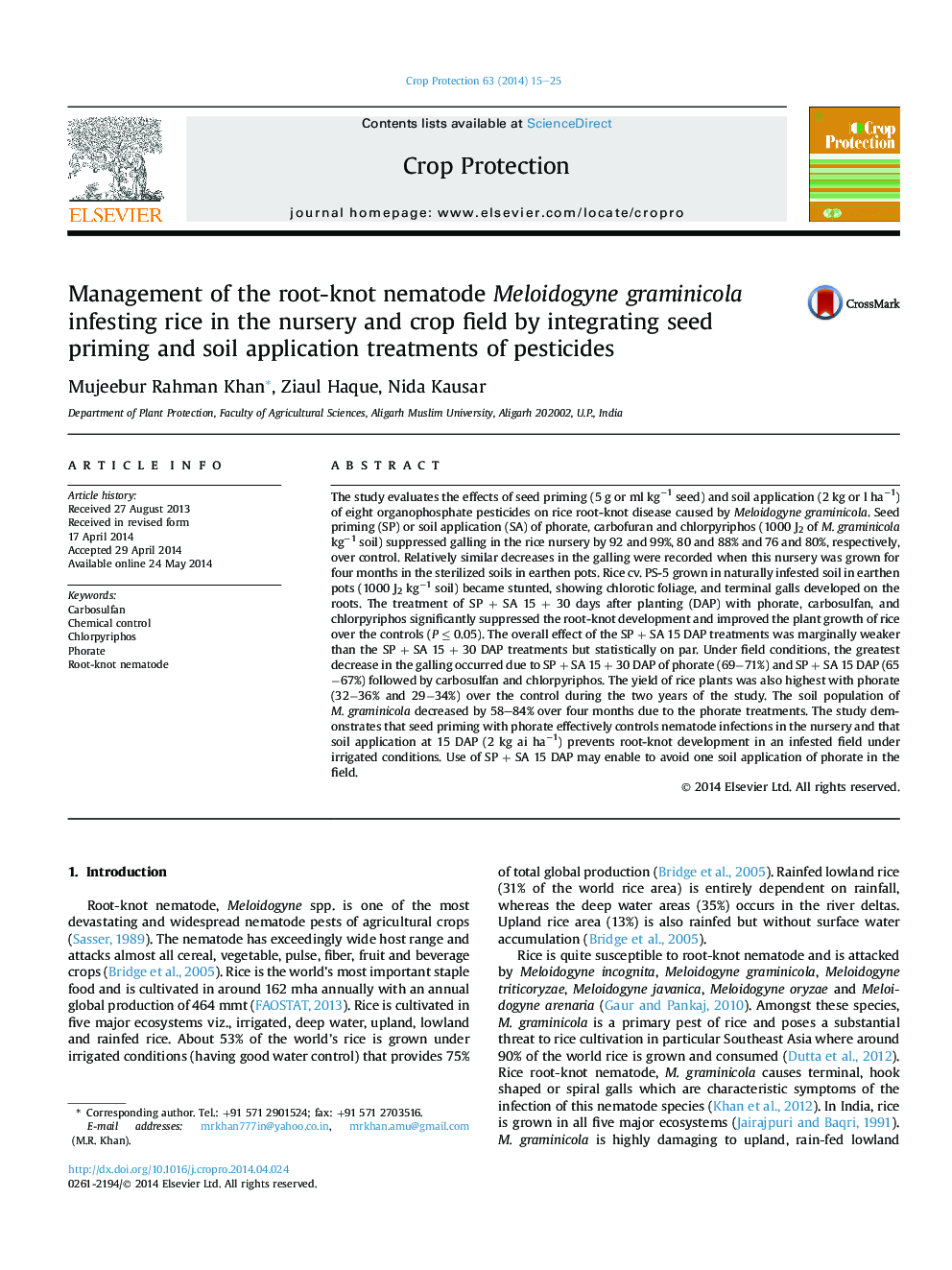| کد مقاله | کد نشریه | سال انتشار | مقاله انگلیسی | نسخه تمام متن |
|---|---|---|---|---|
| 4505933 | 1624324 | 2014 | 11 صفحه PDF | دانلود رایگان |

• Phorate seed priming (SP) controlled root-knot (Meloidogyne graminicola) in rice nursery.
• SP + soil application (SA) proved much effective against the disease in field.
• SP + 15 days of planting decreased galls (65–67%) improved rice yield (29–34%).
• SP + 15 + 30 DAP decreased galls (69–71%) improved rice yield (32–36%).
• SP + SA eliminated one dose of pesticide, hence recommended for root-knot control.
The study evaluates the effects of seed priming (5 g or ml kg−1 seed) and soil application (2 kg or l ha−1) of eight organophosphate pesticides on rice root-knot disease caused by Meloidogyne graminicola. Seed priming (SP) or soil application (SA) of phorate, carbofuran and chlorpyriphos (1000 J2 of M. graminicola kg−1 soil) suppressed galling in the rice nursery by 92 and 99%, 80 and 88% and 76 and 80%, respectively, over control. Relatively similar decreases in the galling were recorded when this nursery was grown for four months in the sterilized soils in earthen pots. Rice cv. PS-5 grown in naturally infested soil in earthen pots (1000 J2 kg−1 soil) became stunted, showing chlorotic foliage, and terminal galls developed on the roots. The treatment of SP + SA 15 + 30 days after planting (DAP) with phorate, carbosulfan, and chlorpyriphos significantly suppressed the root-knot development and improved the plant growth of rice over the controls (P ≤ 0.05). The overall effect of the SP + SA 15 DAP treatments was marginally weaker than the SP + SA 15 + 30 DAP treatments but statistically on par. Under field conditions, the greatest decrease in the galling occurred due to SP + SA 15 + 30 DAP of phorate (69−71%) and SP + SA 15 DAP (65−67%) followed by carbosulfan and chlorpyriphos. The yield of rice plants was also highest with phorate (32−36% and 29−34%) over the control during the two years of the study. The soil population of M. graminicola decreased by 58–84% over four months due to the phorate treatments. The study demonstrates that seed priming with phorate effectively controls nematode infections in the nursery and that soil application at 15 DAP (2 kg ai ha−1) prevents root-knot development in an infested field under irrigated conditions. Use of SP + SA 15 DAP may enable to avoid one soil application of phorate in the field.
Journal: Crop Protection - Volume 63, September 2014, Pages 15–25